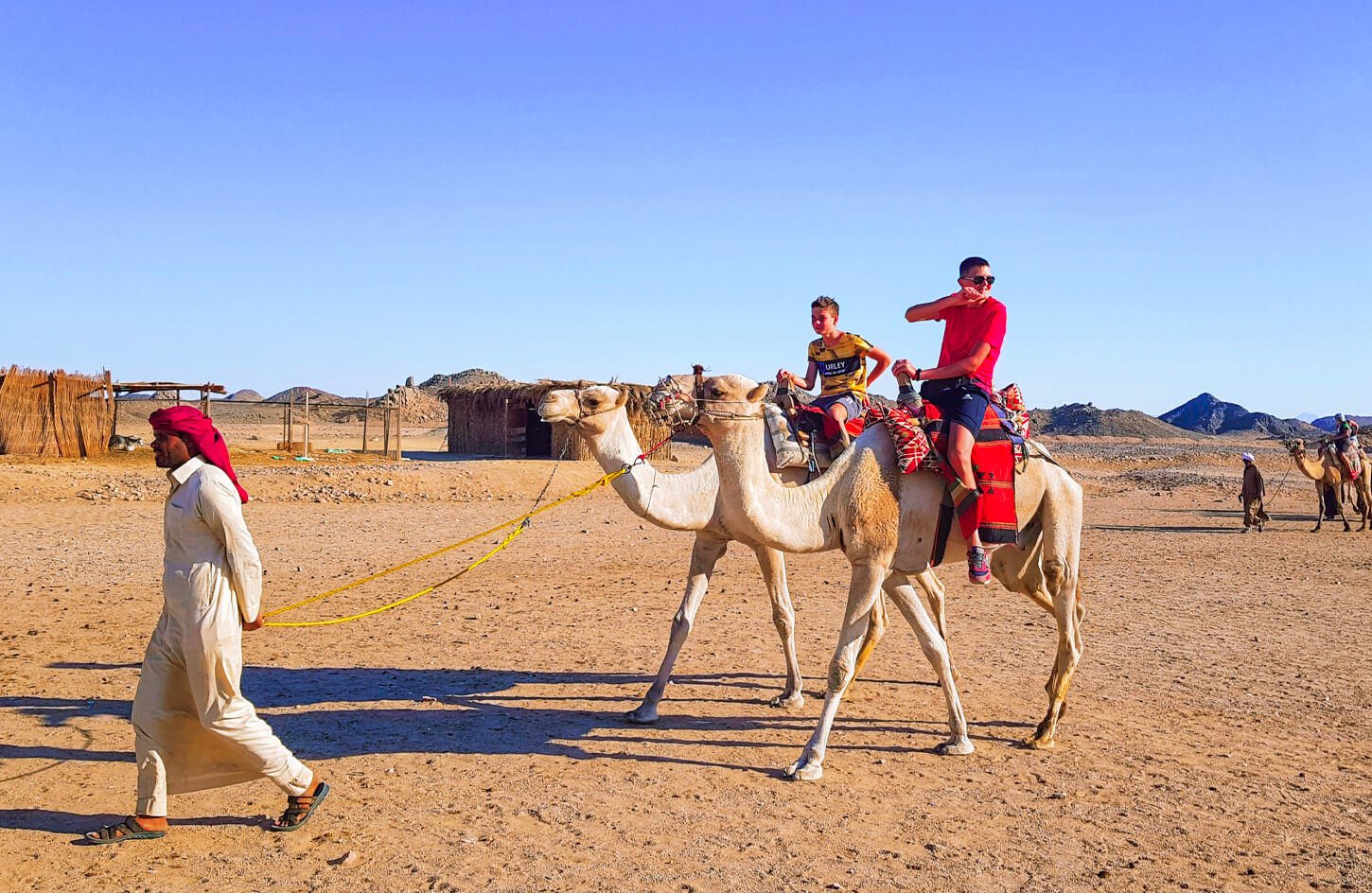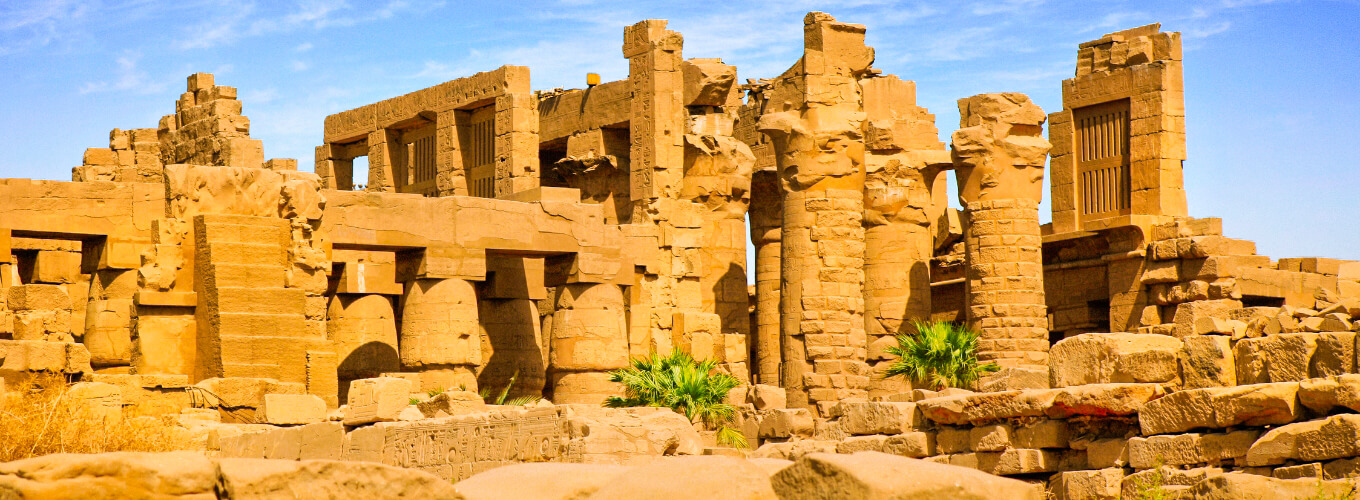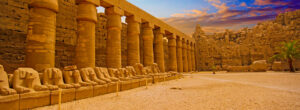Egypt in January offers travelers one of the most delightful experi...

Karnak Temple is one of the most extraordinary monuments in the world, a place where history, religion, and architecture blend in breathtaking harmony. Situated on the east bank of the Nile in Luxor, the temple complex stands as the largest religious structure ever built, spanning over 200 acres. Unlike a single building, Karnak is a collection of temples, chapels, pylons, and obelisks constructed by successive pharaohs over nearly two millennia.
Travelers visiting Karnak Temple step into a spiritual city of stone where every corner reveals stories of gods, kings, and timeless rituals. From the awe-inspiring Great Hypostyle Hall to the sacred lake once used by priests for purification, the site showcases the unmatched devotion and creativity of ancient Egyptians. Whether you explore during the bright hours of the day or attend the Sound and Light Show at night, Karnak Temple promises an unforgettable journey into the essence of ancient Thebes.
The origins of Karnak Temple date back to the Middle Kingdom, around 2000 BC, but its true grandeur emerged during the New Kingdom (1550–1070 BC). Initially dedicated to the god Amun-Ra, the temple was expanded over centuries by rulers who sought to honor the gods and assert their power. Nearly every pharaoh of significance added something to Karnak, making it a historical timeline carved in stone. Hatshepsut built the elegant Chapelle Rouge, Thutmose III contributed the Festival Hall, and Ramses II left behind colossal statues and inscriptions.
Each addition was carefully designed not to replace but to complement what came before, resulting in a vast, interconnected complex. The sheer scale of Karnak, covering more than 60 acres of temples alone, reflects not just religious devotion but also political ambition. Pharaohs showcased their strength by commissioning grand structures, while priests maintained rituals that tied the community spiritually to the gods. For travelers today, understanding this layered history enhances the sense of wonder when walking through its colossal gateways.
One of the most iconic features of Karnak Temple is the Great Hypostyle Hall, a vast space filled with 134 massive columns arranged in 16 rows. Built during the reigns of Seti I and Ramses II, the hall covers over 50,000 square feet, making it one of the most impressive architectural achievements of the ancient world. The central columns rise to 24 meters, supporting enormous stone lintels that once held a roof, creating a monumental indoor space where light filtered through narrow openings. Hieroglyphs and carvings cover nearly every surface, depicting scenes of battles, rituals, and offerings to the gods.
Even after thousands of years, traces of original paint can still be seen on some columns, giving visitors a glimpse of how vibrant the temple once looked. Walking through the Hypostyle Hall feels like entering a stone forest, where the sheer scale leaves travelers humbled by the engineering skills of ancient Egyptians. It is one of the must-see highlights for any visit to Karnak Temple.

Within Karnak Temple lies a large rectangular Sacred Lake, used by priests for daily purification rituals before entering the temple for ceremonies. This body of water symbolized the primeval waters from which life emerged, according to Egyptian mythology. Priests would cleanse themselves in the lake, reinforcing the purity required to communicate with the gods. The lake also played a role in religious festivals, including the Opet Festival, when sacred statues were carried in processions between Karnak and Luxor Temple.
Today, the Sacred Lake remains an atmospheric site, with a giant scarab statue nearby that has become a favorite among travelers. Local tradition suggests that walking around the scarab statue several times brings good luck, and many visitors join in this practice. For travelers, the Sacred Lake offers more than just scenic beauty—it provides insight into the spiritual life of ancient Thebes and the importance of ritual purity in Egyptian religion.
Karnak Temple is famous for its towering obelisks and colossal statues, each carrying symbolic power. The obelisks, carved from single blocks of granite, were erected to honor the sun god Ra, their pointed tips designed to catch the first rays of the morning sun. One of the most striking is the obelisk of Hatshepsut, standing over 29 meters tall, considered the tallest surviving ancient obelisk in Egypt. Colossal statues of pharaohs such as Ramses II also dominate the temple, their massive scale reinforcing the divine authority of kingship.
These monuments served not only as religious offerings but also as political propaganda, showcasing the might of rulers to all who entered. For modern visitors, standing before these structures provides a sense of scale and permanence, reminding us of the ambition and craftsmanship of ancient builders. The obelisks and statues remain some of the most photographed features of Karnak, and for good reason—they capture the temple’s grandeur in a single glance.
Stretching nearly three kilometers between Karnak and Luxor Temple, the Avenue of Sphinxes was one of the grandest processional routes in ancient Egypt. Lined with hundreds of sphinx statues, the avenue was the ceremonial path for the Opet Festival, when statues of Amun, Mut, and Khonsu were carried in sacred boats from Karnak to Luxor. Recent restoration projects have reopened large sections of the avenue, allowing travelers to walk along the same path as priests and pharaohs once did.
The sight of rows of sphinxes, some with human heads and others with ram heads, offers a glimpse into the pageantry of ancient festivals. For visitors, the Avenue of Sphinxes not only connects two of Luxor’s most iconic monuments but also creates a living link between past and present. Walking this path at sunset, with the temples at either end, is an unforgettable experience that captures the spirit of ancient Thebes.
Karnak Temple was not only a religious site but also the stage for some of ancient Egypt’s most important festivals. Chief among them was the Opet Festival, which celebrated the rejuvenation of the pharaoh’s power and the unity between Amun-Ra and the king. The festival included elaborate processions, music, feasting, and rituals performed in both Karnak and Luxor Temples. Another significant celebration was the Beautiful Feast of the Valley, when families visited the necropolises on the west bank of the Nile to honor their ancestors.
These festivals reinforced social and spiritual ties, bringing communities together in devotion and celebration. For travelers, imagining the temple filled with music, incense, and colorful ceremonies adds vibrancy to the ruins. Modern visitors can learn about these traditions through inscriptions and wall carvings that depict scenes of processions, offerings, and rituals. Understanding the role of festivals at Karnak deepens the appreciation of how central the temple was to the religious and social life of ancient Thebes.

The history of Karnak Temple did not end with the pharaohs. During the Greco-Roman period, additions and modifications were made, including chapels dedicated to new deities. The temple also served as a military camp for Roman forces, leaving behind inscriptions that reveal their presence. Later, as Christianity spread through Egypt, some parts of the temple were converted into churches, with Christian symbols carved into the stone.
During the Islamic era, Karnak was respected as an ancient wonder, though many of its stones were repurposed for building projects in Luxor. Despite these changes, the core of the temple complex remained intact, protected by layers of history. For modern travelers, this continuity makes Karnak a living monument, where each era added a new layer to its story. Walking through the complex is not only a journey into ancient Egypt but also an exploration of how different civilizations have interacted with and preserved the site over time.
Exploring Karnak Temple during daylight is a mesmerizing experience. The sunlight highlights the carvings on columns and pylons, making it easier to appreciate the details of hieroglyphs and reliefs. Early morning or late afternoon visits are ideal, as the lighting is softer and temperatures are more comfortable. Travelers can wander at their own pace through the Great Hypostyle Hall, the Sacred Lake, and the various chapels, each offering unique insights into the religious life of ancient Egypt.
Hiring a knowledgeable guide is highly recommended, as the sheer size of the complex can be overwhelming. A guide helps bring the history to life, explaining the meaning behind the inscriptions and pointing out hidden details. For photography enthusiasts, daylight visits provide the best conditions for capturing the grandeur of the temple. Whether exploring solo or as part of a group, a daytime tour offers a complete immersion into the world of ancient Thebes.
One of the most memorable ways to experience Karnak is by attending the evening Sound and Light Show. This event combines narration, music, and dramatic lighting to tell the story of Karnak’s construction, the pharaohs who built it, and the gods who were worshiped there. As travelers walk through the illuminated ruins, they hear stories of triumph, devotion, and discovery, bringing the temple’s history vividly to life.
The show is available in multiple languages, making it accessible to visitors from around the world. Many travelers describe it as a highlight of their trip, offering a magical atmosphere that complements the daytime exploration of the site. The interplay of lights and shadows creates a theatrical experience, with the Great Hypostyle Hall and obelisks taking on an otherworldly glow. For those seeking an unforgettable evening in Luxor, the Sound and Light Show at Karnak Temple is a must.
To make the most of a visit to Karnak Temple, travelers should plan carefully. The site is open daily, usually from early morning until evening, though schedules may vary. Entrance tickets can be purchased on-site, and combination passes for multiple attractions in Luxor are available. Comfortable shoes, sunscreen, and bottled water are essentials, as exploring the vast complex can take several hours. Hiring a licensed guide enhances the visit, offering valuable context and stories beyond what can be seen.
For those interested in avoiding crowds, early morning visits are recommended, while the late afternoon provides excellent lighting for photos. Travelers staying in Luxor will find the temple easily accessible, located just a few minutes from the city center. Adding both a daytime tour and the evening Sound and Light Show ensures a complete experience. With careful planning, a visit to Karnak Temple becomes not only a journey into history but also one of the most memorable highlights of a trip to Egypt.
Karnak Temple is more than an archaeological site—it is a living testament to the devotion, creativity, and ambition of ancient Egyptians. From its colossal columns to its sacred lake, from its grand festivals to its timeless inscriptions, every corner of the complex tells a story that continues to resonate across generations.
For travelers, Karnak offers not only awe-inspiring monuments but also a profound connection to the spiritual and cultural heart of ancient Thebes. Whether explored under the bright Egyptian sun or illuminated by the lights of evening, the temple leaves a lasting impression that stays long after departure. Visiting Karnak Temple is not just a highlight of Luxor—it is one of the greatest experiences in world travel.
We offer tours to Egypt’s most famous destinations such as the Pyramids and Sphinx in Giza, Karnak Temple and Luxor, Valley of the Kings, Sharm El Sheikh and Hurghada for beaches and diving, and Alexandria.
We provide organized tours, luxury hotel and resort bookings, comfortable transportation services, experienced tour guides, and activity ticket bookings such as diving, desert safaris, and Nile cruises.